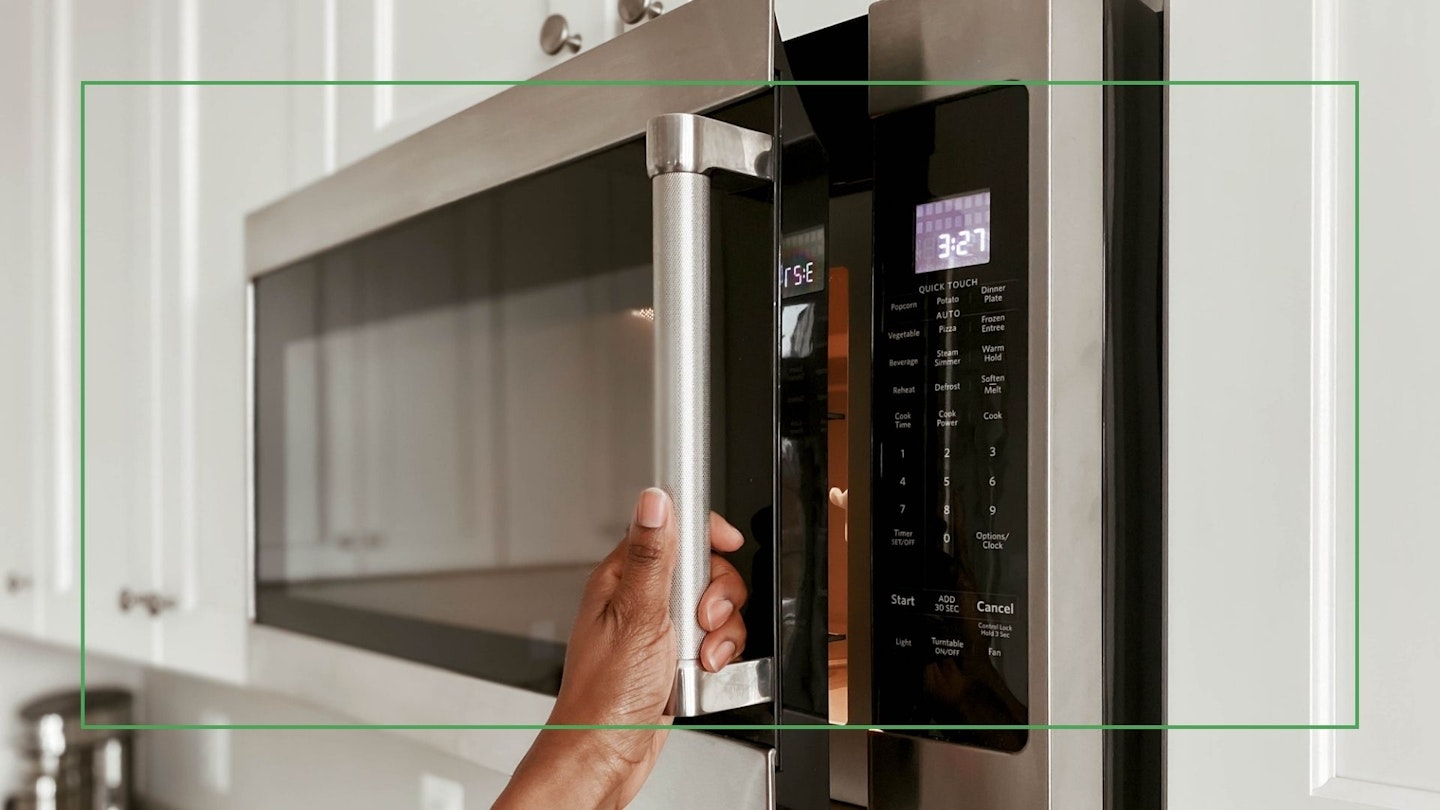It’s rare to find a modern kitchen that isn’t kitted out with a microwave that is, quite honestly, the epitome of convenience - and we are here to tell you which microwave will suit you best. Whether you have got a microwave meal that needs heating pronto? Or maybe you’re looking to heat up some leftovers, or a coffee that’s gone cold? The best microwave can sort you out with meals in a matter of minutes. However, microwaves have come a long way since their introduction in the 1950s.
You can now find microwaves packed with functionality that goes beyond heating up meals – you can quickly and efficiently steam, grill, bake, and more at just the press of a button to create recipes and meals that don’t compromise on quality or flavour.
When choosing a microwave of your own, you’ll need to consider what functions and features suit your cooking requirements, with your household size, kitchen space, and budget helping to dictate what’s best for your home. With budget microwaves under £100 all the way up to £2,000, our microwave buyer’s guide will give you that helping hand in choosing the right microwave for your kitchen and getting the best for your money.
Microwave types
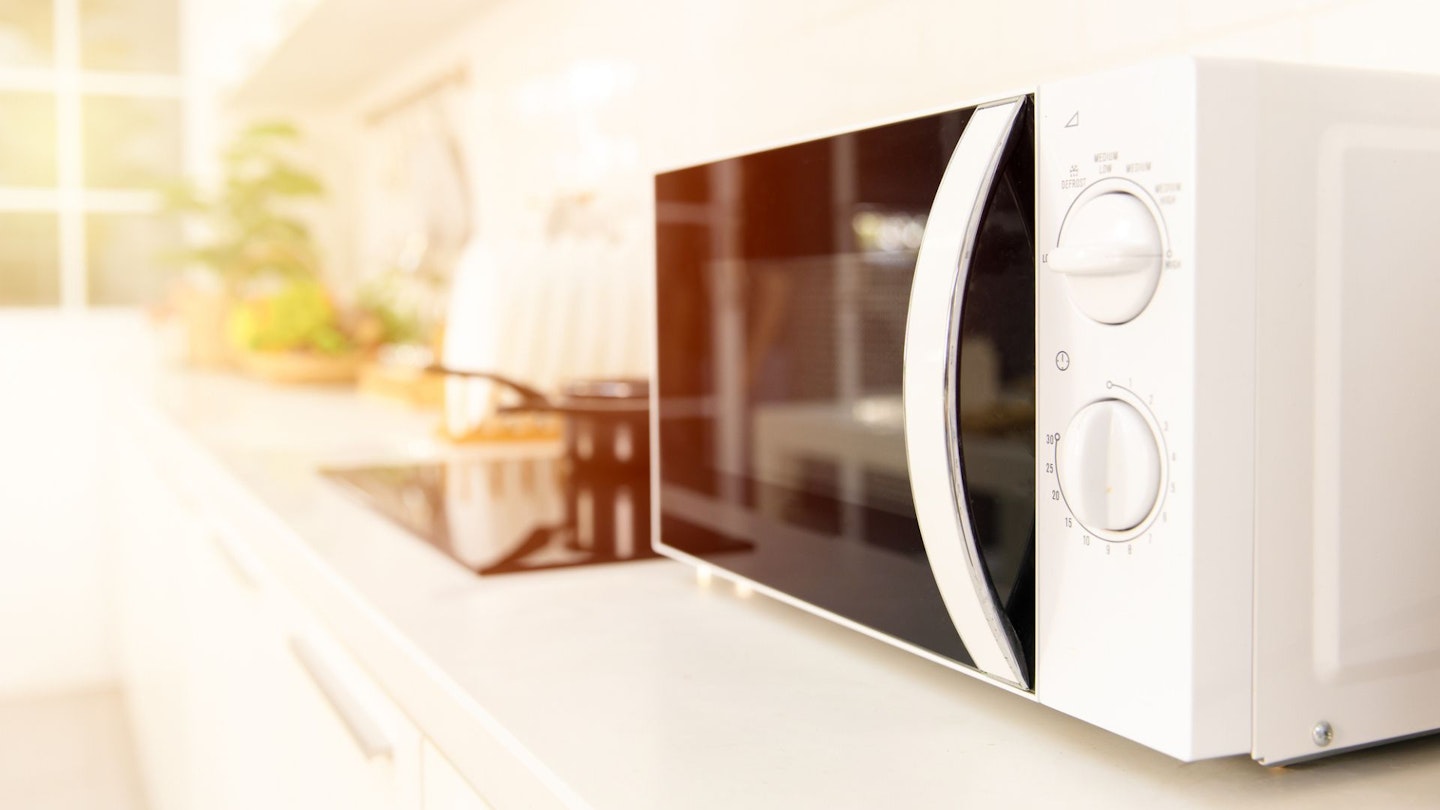
What is a standard microwave?
Also known as a solo microwave, these are the microwaves you’ll be most used to seeing in people’s kitchens and the most commercially available to buy in the UK. As such, it’s also the most inexpensive type of microwave. The most basic microwave type, it just works with the classic functions you’d expect of a microwave – it’ll heat up food and has an easy-to-use control panel where you can adjust times and settings. If you have a small kitchen, you don’t need to worry as there are many small microwave options available on the market.
Pros
More affordable
Easy-to-use
Good for reheating and preparing microwave meals
Cons
More basic microwave functionality

What is a microwave grill?
A microwave grill is just as the name suggests; a microwave and grill in one. It has all the same functionality as a standard microwave but has the added ability to grill foods, great if you like the outside of your food to be crisp or browned and want to grill meat with ease. Available as freestanding or integrated, you can even microwave and grill at the same time for oven-like results.
Pros
A two-in-one appliance that saves countertop space
Fast results
Good for microwave cooking and grilling meats
Cons
It may not be of value if you already have a grill in your oven
What is a combination microwave?
Ideal for enthusiastic foodies or those who prefer to cook healthy recipes, a combi microwave gives you a vast range of cooking methods beyond the standard microwave. With variations across models, you can steam, cook, and grill within the one appliance with the same quick and effortless cooking experience you can expect from a microwave. Its multi-functionality means you don’t need to buy separate appliances for different functions and can save valuable kitchen counter and cupboard space.
Pros
Space-spacing with multi-functionality in one
Can reduce cooking times by using steam
Multiple cooking options – you can use to cook, bake, grill, steam, low-fat fry, and more.
Cons
Takes up more space compared to standard microwaves
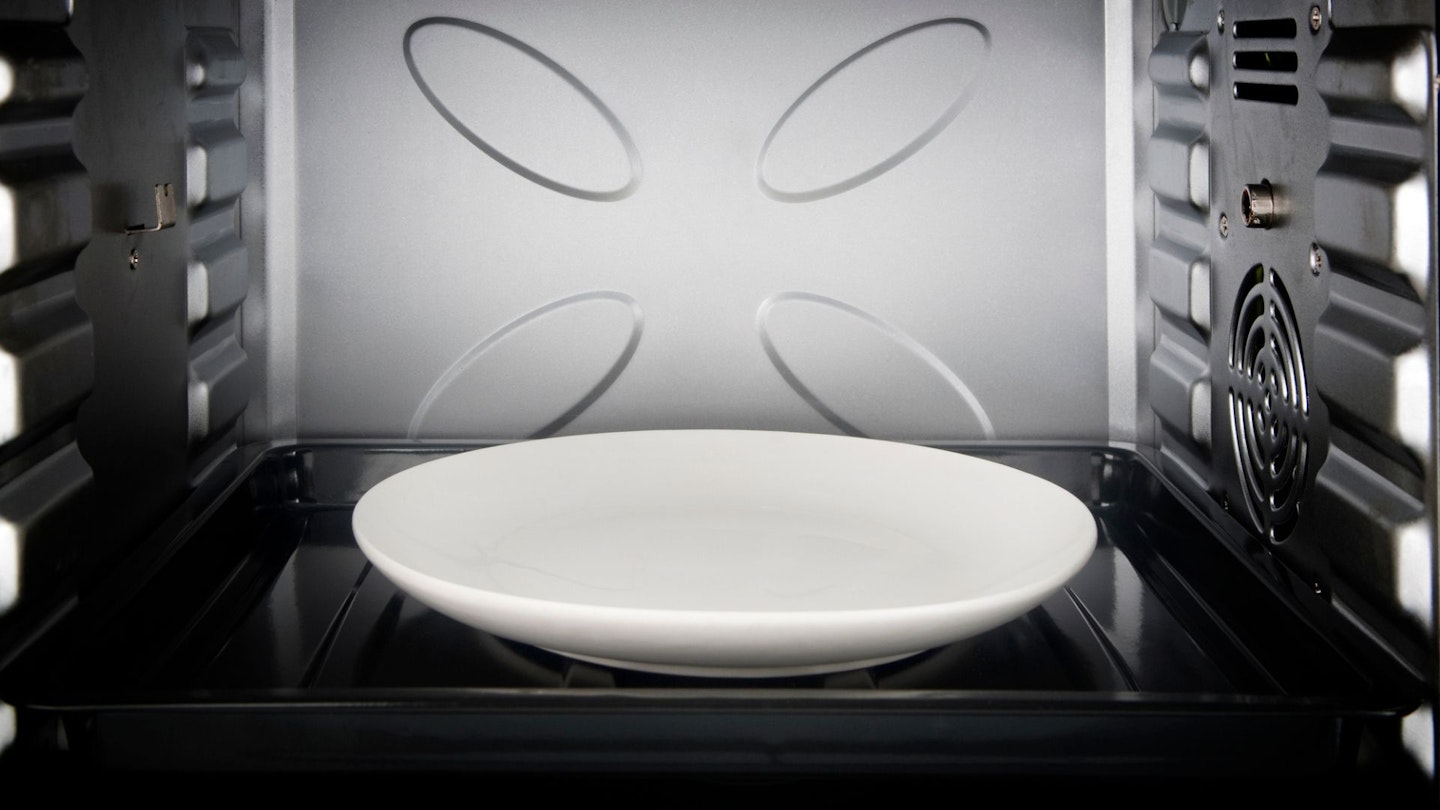
What is a flatbed microwave?
Though not as common, there are flatbed microwaves available to buy in the UK. Instead of using the classic turntable platform, food can be placed on a flatbed which significantly increases the cooking area. Without the need to turn, it’s ideal for fitting large or non-circular dishes that may struggle to rotate in a standard microwave.
Pros
Larger cooking area
Turntable-free to accommodate all dish sizes
Cons
Fewer options available in the UK
Microwave fits

What is a freestanding microwave?
This standalone appliance sits on your kitchen countertop, much like your kettle or toaster, giving you the flexibility to place it wherever you like.
Pros
Mobile
Zero installation required
More affordable
Cons
Takes up space on your countertop
Need to be placed near a plug
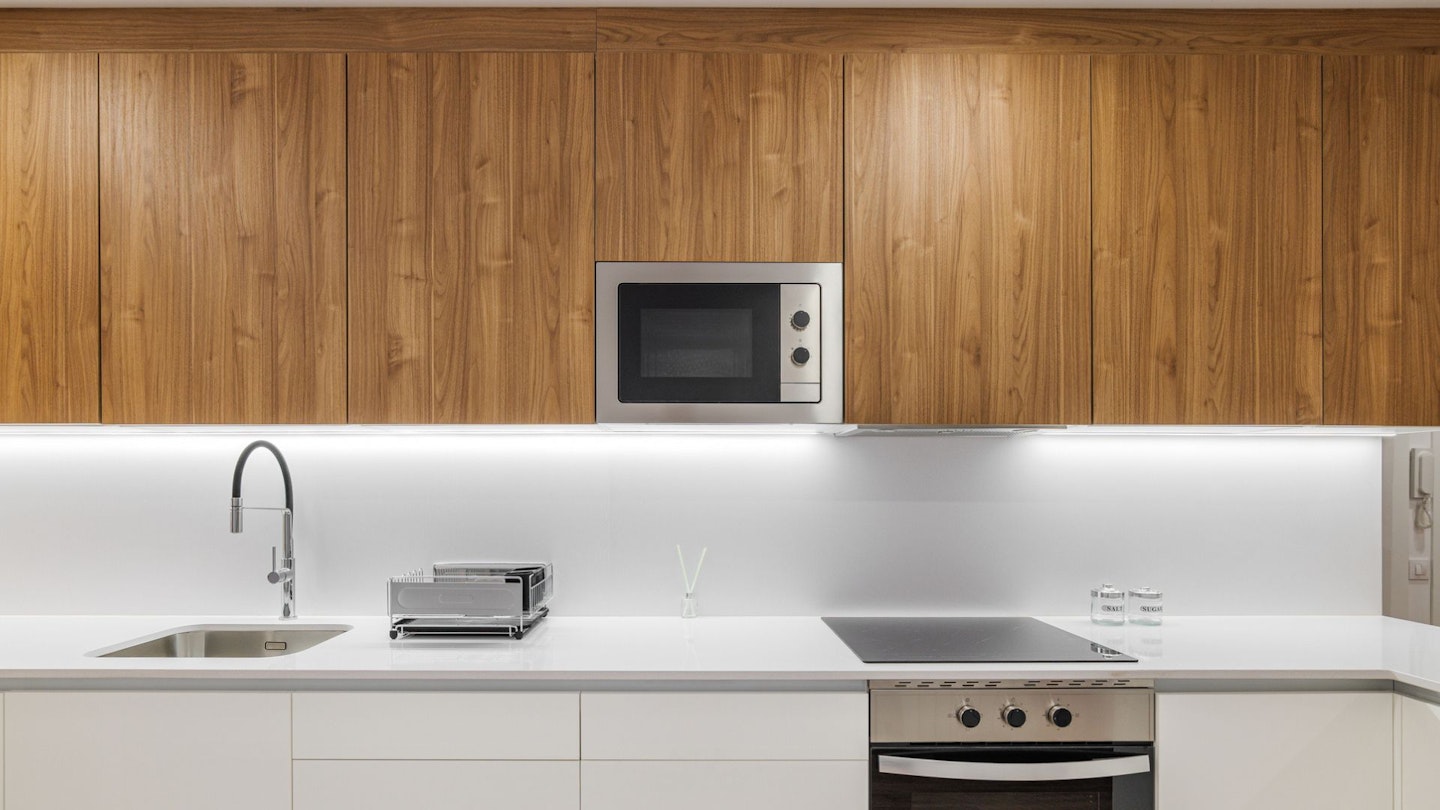
What is an integrated microwave?
If you’re looking for a multi-functional oven that frees up precious countertop space, consider buying an integrated microwave. Designed to be built into your cabinets, perfect for people that have fitted kitchens, it creates a seamless look with options for standard, combination, or microwave grills. As it’ll be fitting in a designated space, make sure to check the microwave dimensions so it fits.
Pros
Looks best aesthetically
Frees up countertop space
Cons
Requires professional installation and fixing
More expensive
What to look for when purchasing a microwave
Once you know the type of microwave you’re after, you can narrow down your search to a microwave that accommodates all the features and specs you’re looking for. Or, if you’re still not sure about the right type of microwave to suit your kitchen and lifestyle, some of these features that are type-specific may sway your vote.
Key features to look for
Capacity
Microwaves can vary in capacity from 15 litres to over 32 litres, but it can be hard to know what the right size for your kitchen and lifestyle is. As a general guide:
• 15-20 litres: Ideal for students, singles, or small households of two to four people.
• 21-27 litres: This is the typical size range ideal for families.
• 25-30 litres: Ideal for larger households of four to six people.
• 32 litres and over: Best for large households with more complex cooking needs.
For the lower capacity ranges, you’ll be more likely to find standard microwaves with the availability of combination and grill microwaves growing with capacity size to accommodate larger food and the increased functionality.

Size
It’s worth keeping in mind also that the capacity will affect the overall size of your microwave, so make sure to measure up to make sure it fits in the designated space. Fortunately, there are a range of sizes from compact models to fit smaller kitchens and large, full-size microwaves for larger families. However, if you’re after a combination or flatbed microwave, these are more likely to be on the bulkier side.
Wattage
The power of a microwave is measured in watts with microwaves ranging from 750W to 1200W. Typically the higher the watt count, the quicker and more evenly your food will cook.
Heating category
Much like your other household appliances, your microwave comes with an A to E rating, though this relates to its heating category rather than energy rating. This symbol often found on the front of modern microwaves, determines how powerful the microwave is when in use. An E-category microwave is the most powerful and takes the least time to heat food.
Lining
Thankfully, microwave ovens are much easier to clean compared to your conventional ovens – minimal elbow grease required. Most microwaves are lined with metal which is easy to wipe clean though you may find some models have an antibacterial coating, that prevents a build-up of bacteria. Many of them even have a catalytic or pyrolytic lining, both of which are self-cleaning and absorb the dirt from food to keep your microwave looking its best.
Pre-programmed settings
If you’re all about taking the easy route when it comes to cooking, picking a microwave with pre-programmed settings will take the guesswork out of getting the right timings for your food. These pre-set programmes may include reheating and defrosting, as well as auto-cook settings for popular foods such as potatoes, rice/pasta, vegetables, fish/meat, or beverages. Simply select what you're cooking and the microwave will set the perfect cooking time and heat.

Multi-step programming
Another way to make your microwave cooking even easier is to choose a microwave that offers multi-step programming. With this feature, the microwave will automatically change the power levels during cooking and move on to the next sequence to ensure the quickest cooking time. For example, using multi-step programming you can defrost and then cook food without needing to select programmes during the process. Super handy if you’re busy doing other kitchen tasks or household chores.
Sensor cooking
If you’re prone to microwaving your food for too long so it becomes dry and not as appetising as you’d hoped, a microwave with sensor cooking could be your saving grace. It will automatically detect the moisture in the food and the microwave’s humidity and adjust the power levels and cooking time to give you the best results – how nifty is that?
Child lock
If you have little menaces that find their way into the kitchen, you can keep them from using the microwave unsupervised with a child lock function. Once activated, it locks the control panel so you can prevent them from using, starting, or interfering with any cooking in progress.
Control panel
Having a clear, easy-to-read control panel is essential for all microwaves but they can vary in their design. Digital control panels tend to have more advanced settings where you can set exact timings through touch or electronic buttons – for a microwave that’s even easier to clean, touch buttons can just be wiped over. Some microwaves also include manual dial controls that allow you to smoothly alter settings without interrupting the cooking process. What you look for in your control panel will depend on the settings and programmes you’re looking for, and which you’d find easier to operate.
Aesthetic
The design of your microwave is completely up to you and down to personal preference – there are plenty of different styles from colourful, retro-style microwaves, to sleek, ultra-modern ones. If you’re not sure what design to go for, consider the existing theme or aesthetic in your kitchen – if your other appliances are stainless steel, you may want to get a microwave to match.
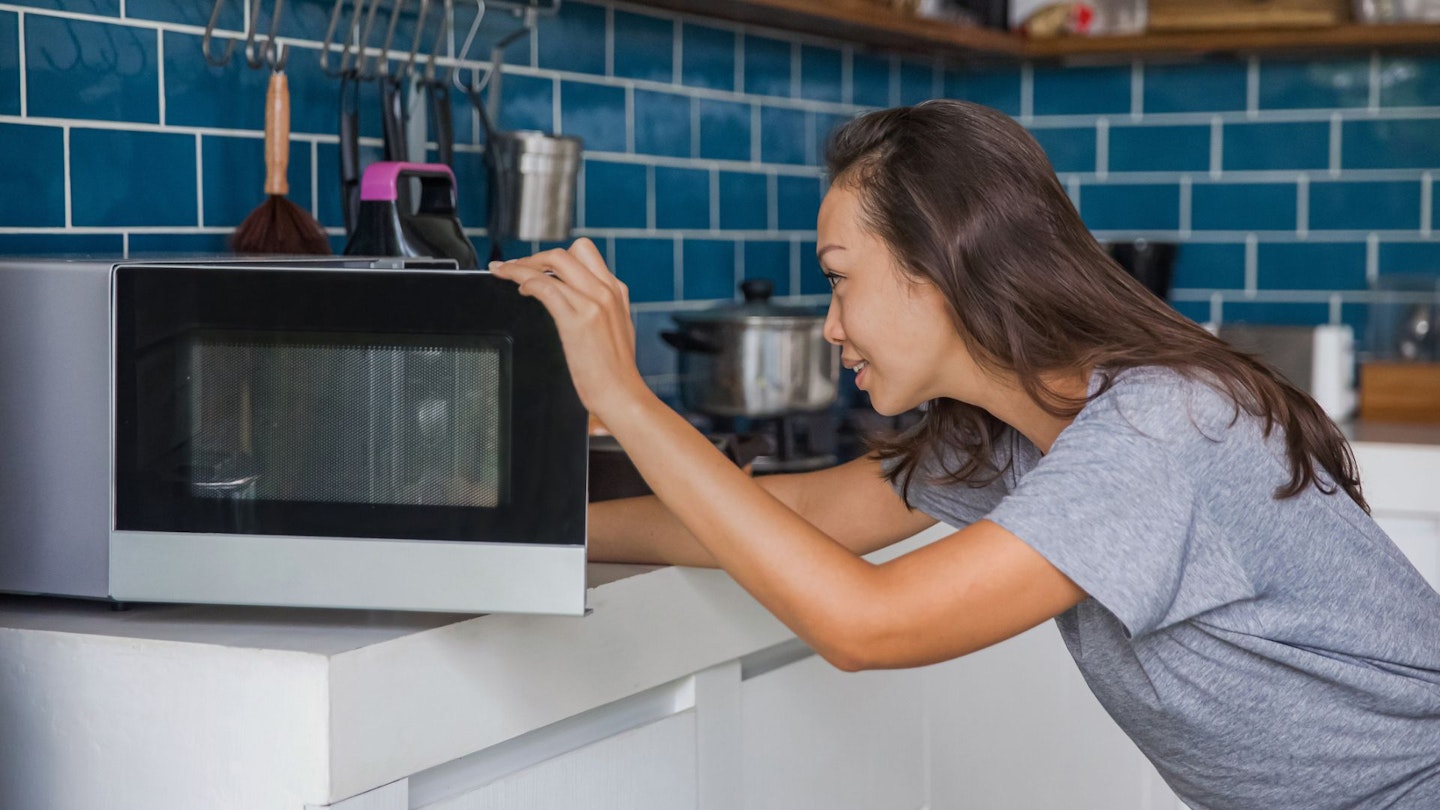
How to use a microwave
As microwaves can completely vary in their capabilities, make sure to always consult the manufacturer’s instructions for use to make sure you’re using your microwave correctly and getting the most from your appliance.
How to clean a microwave
Where possible, you should try to keep your microwave clean to eliminate the risk of cross-contamination, keep your microwave in good hygiene, and to make sure it can continue to cook evenly.
We know how frustrating it can be when one messy meal wreaks havoc in your beautifully clean microwave, so if you don’t have cleaning wipes to hand, here’s how you can quickly and easily give your microwave a clean with ingredients from your kitchen in as little as 10 minutes.
How to clean a microwave with lemon
• Cut a whole lemon in half and squeeze the lemon juice into a microwavable bowl or jug before adding 500ml of water.
• Put your bowl or jug into the microwave and turn your microwave onto full power for five minutes.
• Once finished, leave the microwave door closed for two to three minutes to loosen up all the grime in your microwave.
• Carefully remove the bowl or jug from the microwave but be careful as the water will be very hot.
• If your microwave has a turntable, remove this, take a sponge, and wipe down your microwave from top to bottom.
• Give your microwave a wipe-over with the sponge before popping back into the microwave.
Cleaning alternatives
If you don’t have a lemon to hand, you can follow the same method but substitute the lemon juice for two tablespoons of white wine vinegar, or two heaped tablespoons of baking soda instead. All of these natural ingredients are great for lifting dirt and ousting bad odours.
Microwave safety and care tips
As well as keeping your microwave clean, here are some safety and care tips to keep your microwave in optimal working condition:
• Only use microwave-safe containers, dishes, and tableware. These are usually made from ceramic, glass or plastic.
• Never place metal inside a microwave.
• Don’t place sealed containers inside the microwave – make sure food is vented so steam can escape preventing the food from exploding and inflicting damage.
• Make sure to keep any vents clear.
• If in any doubt, consult the manufacturer’s instruction manual.
